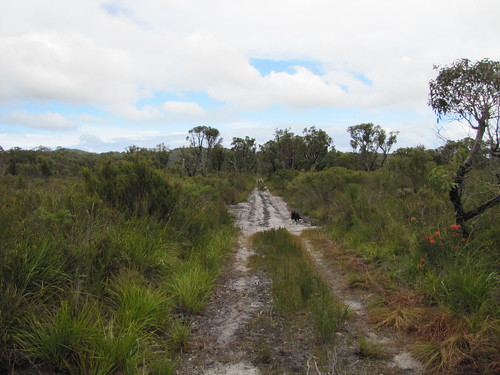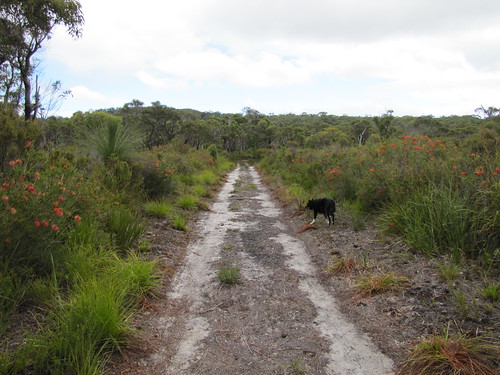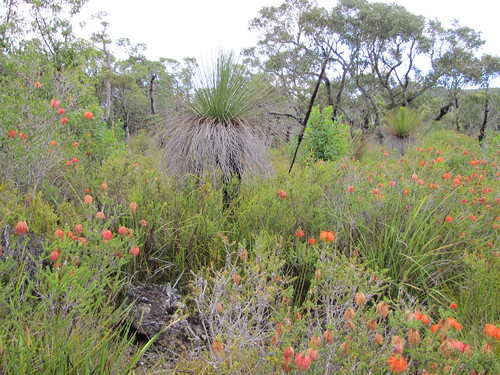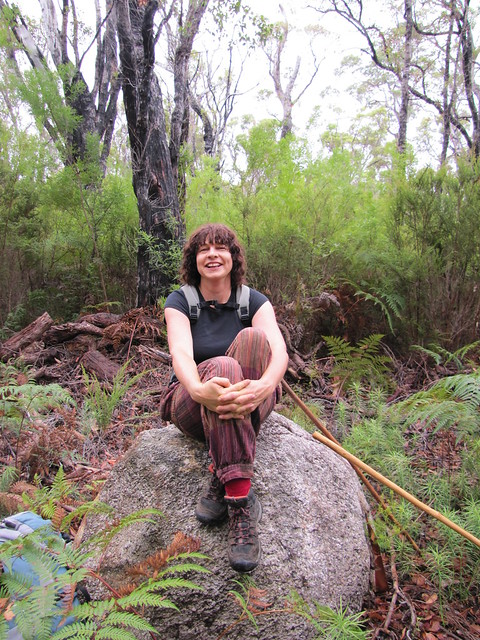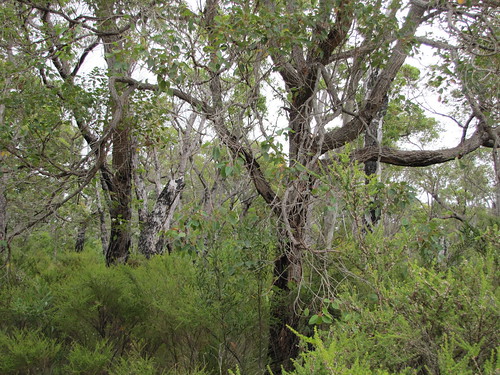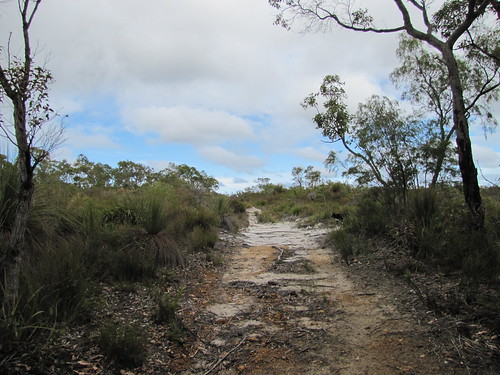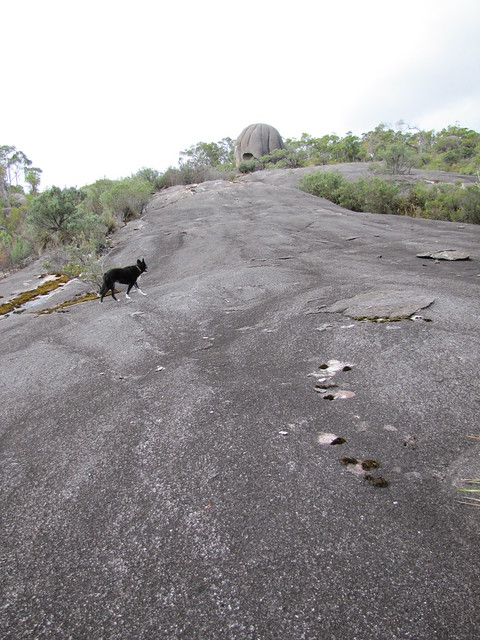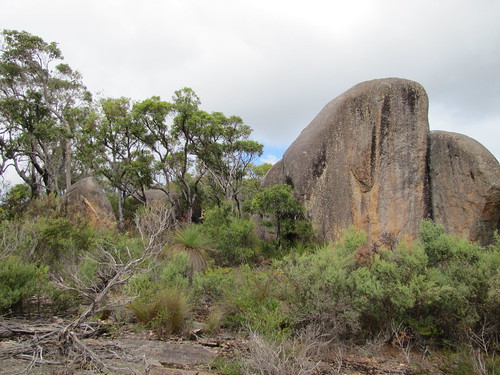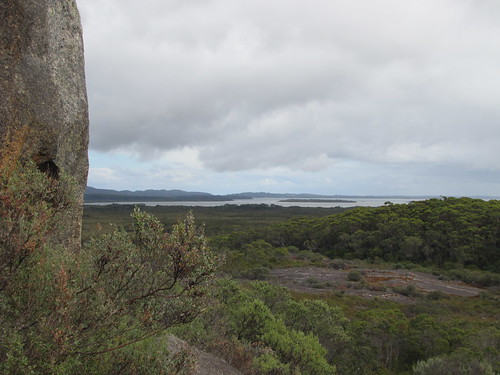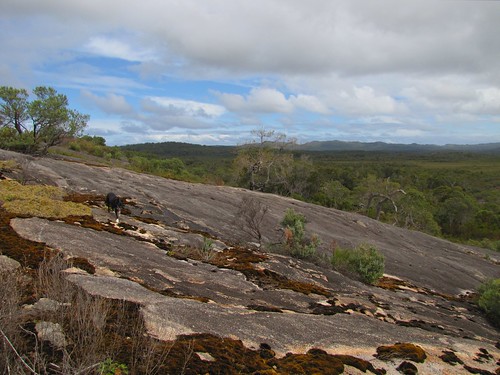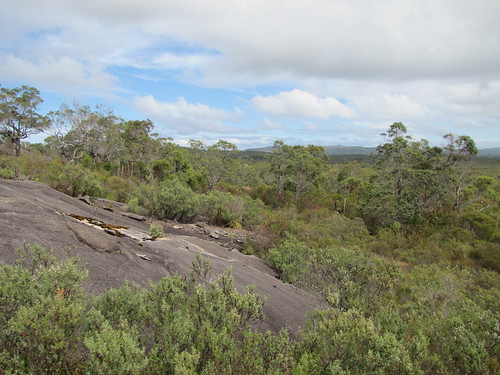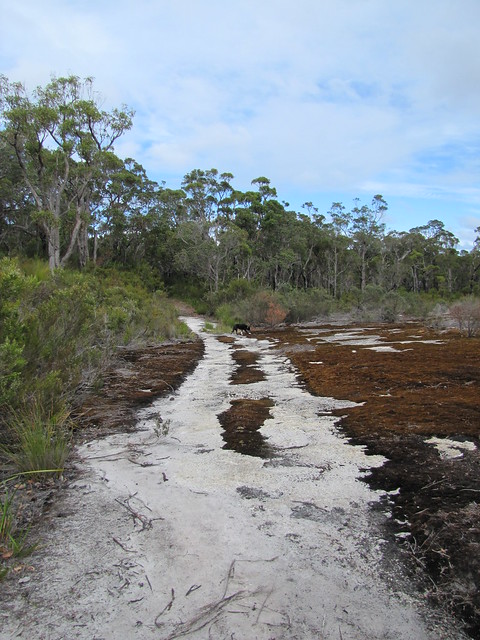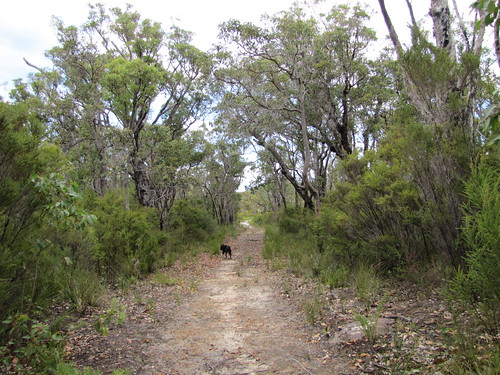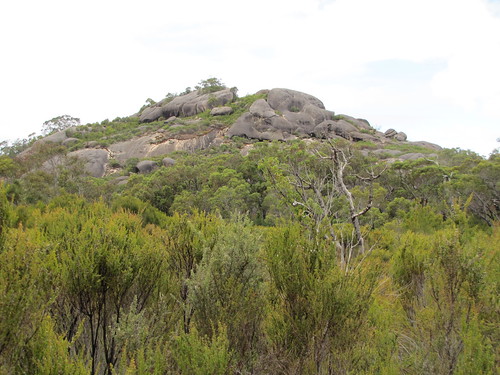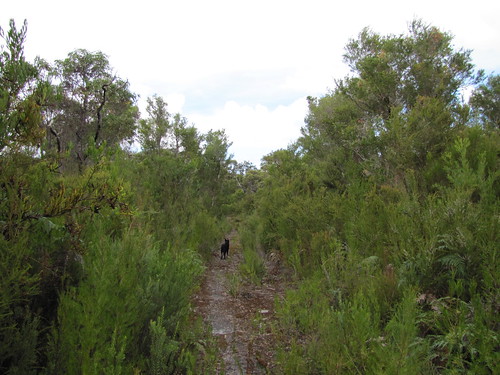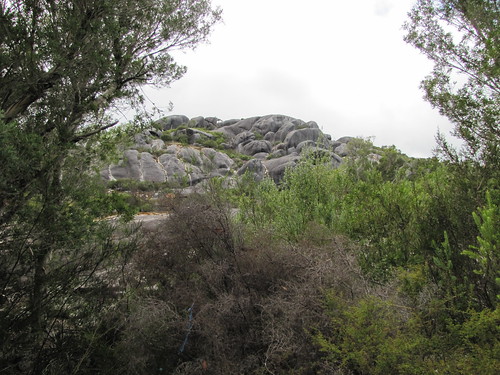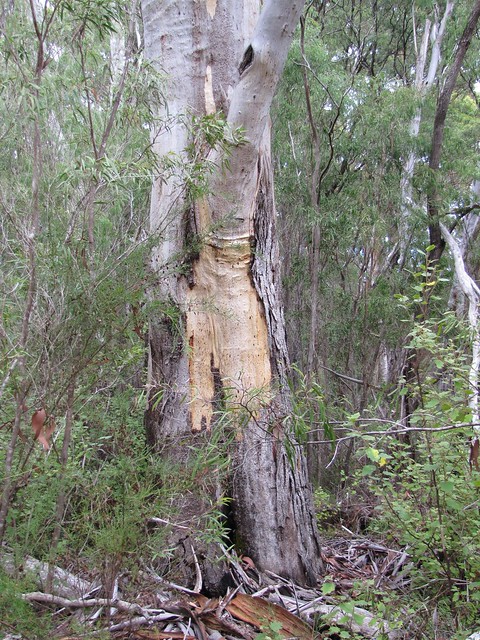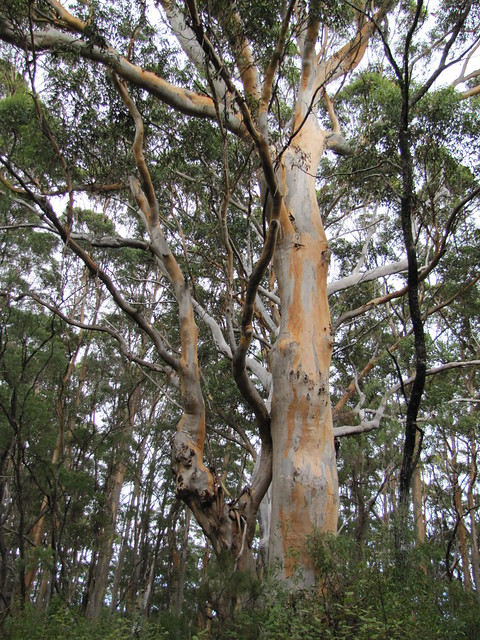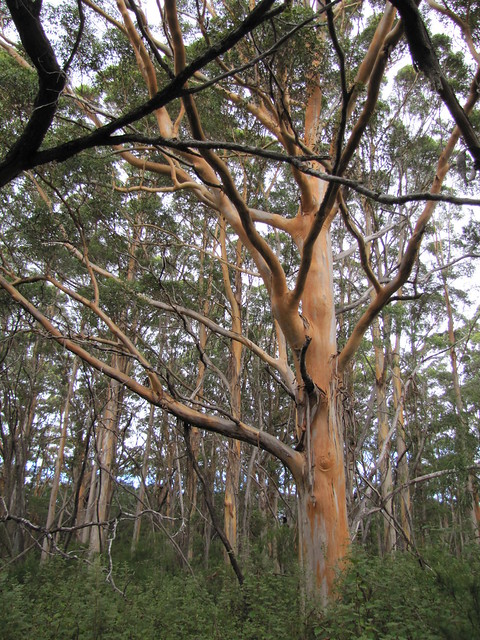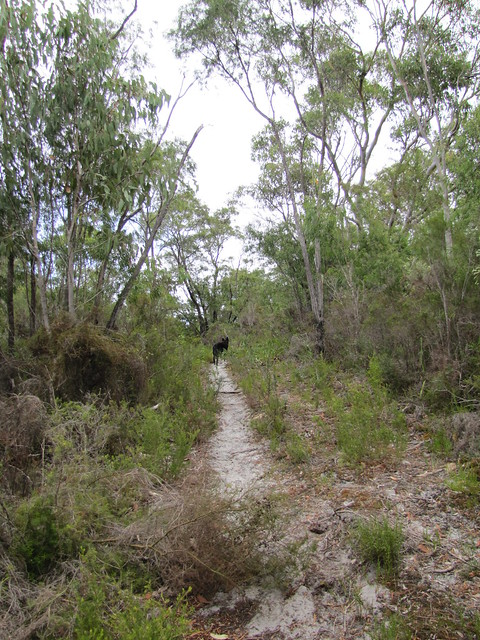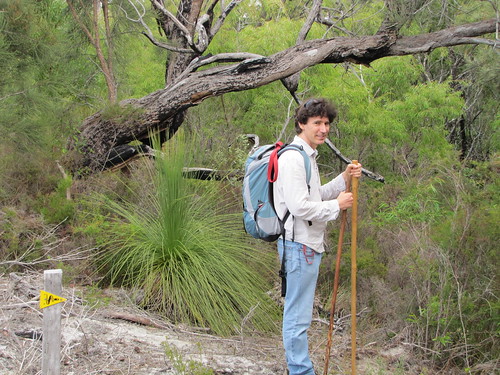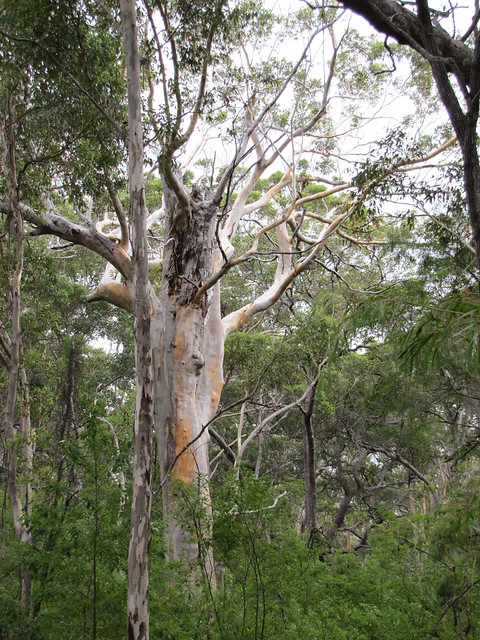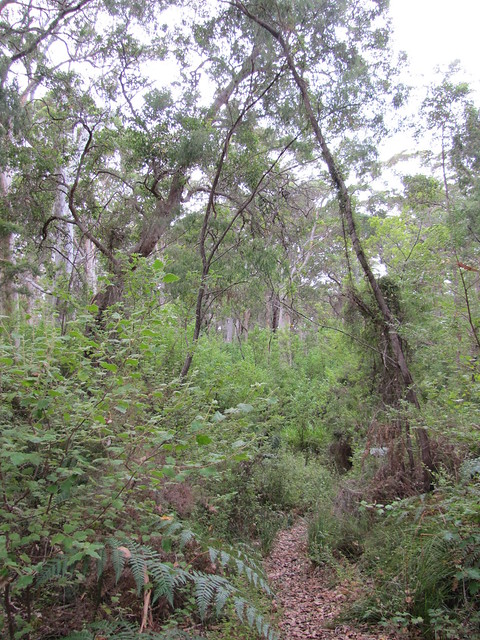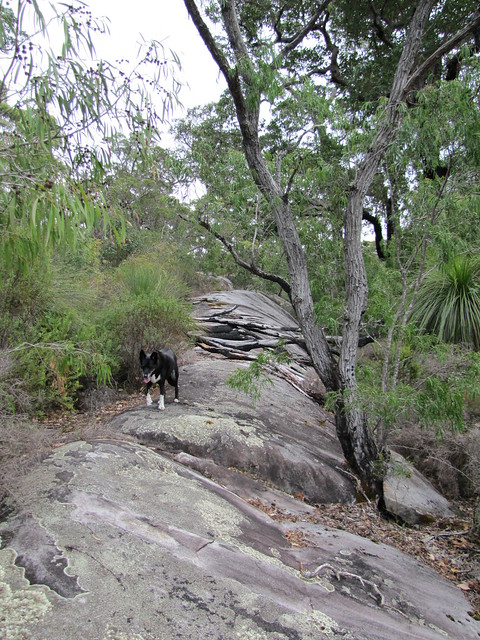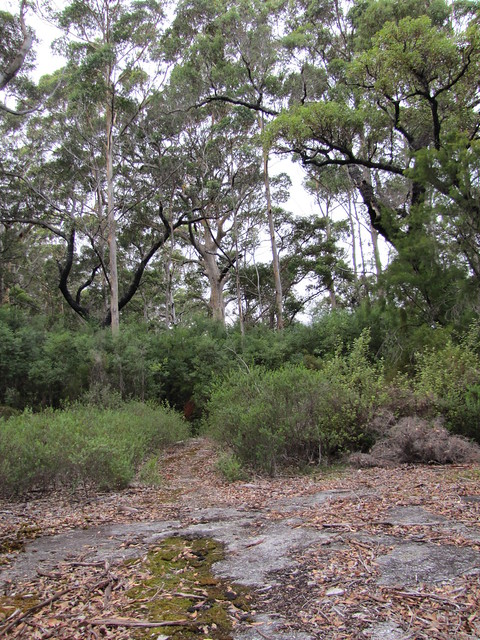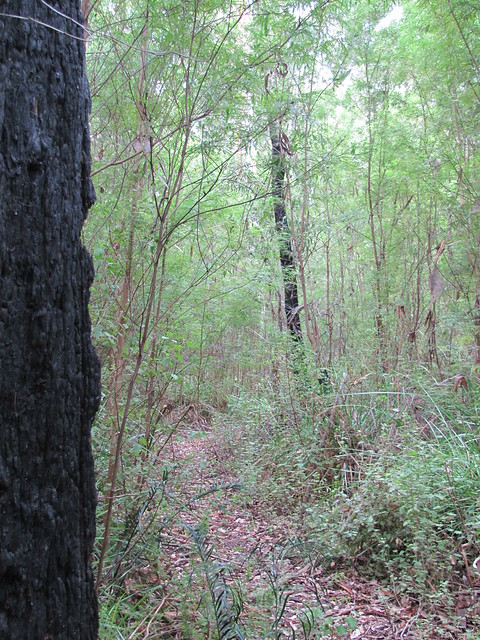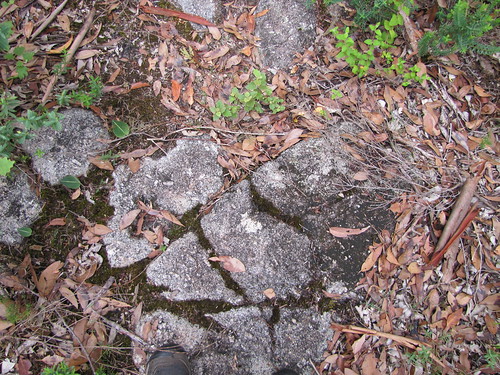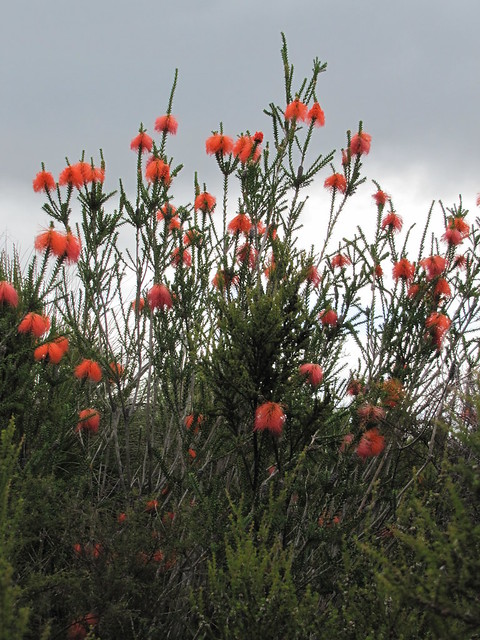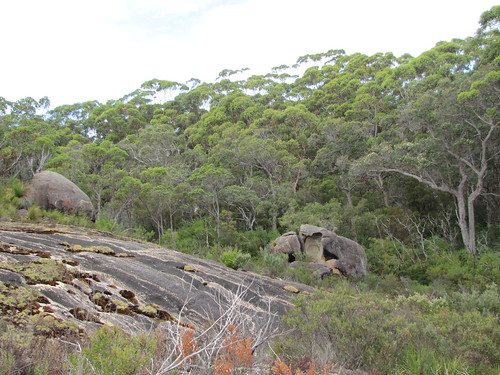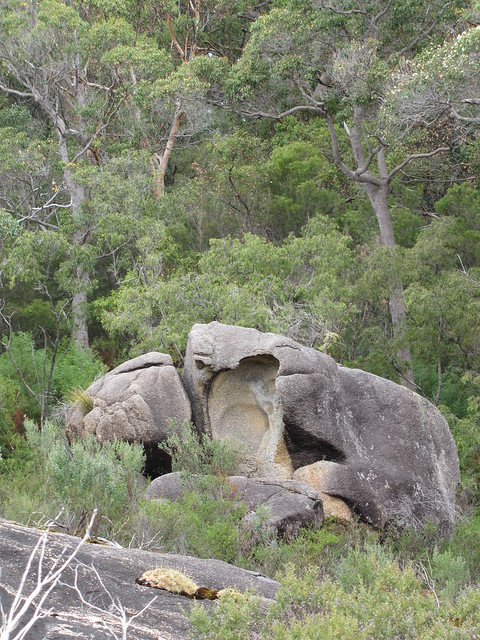April 6, 2023
WOOLBALES LOOP
If you’re perfectly sane, what do you do on your day off after three days of farm fencing repairs and various other general chores? Why of course, you go on a 19km hike. And you don’t let yourself know you’re going to do that distance, because your journey is open-ended, and only when you’ve reached your halfway point do you realise you’ve done it again – walked considerably further than you expected to, and that this might result in a significant amount of pain in the last hour or so of your journey.
But, as your husband said to you, you’ve spent a significant amount of the last 6 weeks teaching yourself the ins and outs of wire fencing and you’ve repaired kilometres of boundary and internal fences, you’ve driven in dozens of pickets and gotten numerous cuts not to mention regular exhaustion, and you really really really deserve a treat after nearly two weeks since your last recreational outing.
Last year we attempted the Woolbales track west of Walpole, and got flooded out. My beloved’s computer reminded him, and he me, that now was a good time to do that walk – at the start of autumn so cool enough with only moderately crazy UV, and barely at the break of season, so not yet wet enough to cause widespread landscape inundation.
And just to be on the safe side, we packed flip-flops as well as raincoats for our expedition, in case of unexpected water crossings or expected showers. As per umbrella principle, we ended up using neither, even though it rained for most of the car trip on the way there.
Here’s the walk map – the plan was to walk as far as we wanted along the Woolbales track, and then return, possibly via the Bibbulmun loop if we made it all the way to the end (we did and we did).
The start of the track was familiar from last time.
And just reiterating from an earlier hiking blog entry, I don’t go anywhere remote without a dog since pepper spray was made impossible to obtain in Western Australia. I’ve had two frightening and potentially life-threatening experiences with unhinged people on remote tracks earlier in my life, and will not be unprepared again. Neither will I give up hiking because of the existence of unhinged people. Our dog was mostly kept on a leash when bushwalking until she stopped being tempted to go on side trips. She goes with us and she’s a lot less destructive than many modern people’s children we’ve met on the tourist tracks – she doesn’t litter, she doesn’t rip flowers or leaves off plants, she doesn’t yell at the top of her voice, etc etc. And we do not let her hunt, or cause bother. All of us leave only footprints, and bury any excrement into the humus layer.
The dingo used to be common in these ecosystems before being largely exterminated by European settlers; there was a symbiotic relationship between Indigenous Australians (especially the women) and this wild canine. It’s interesting that kelpies have some dingo blood, which I hypothesise to be at the base of our dog’s excellent snake-avoiding instincts and other feral habits like not defaecating on open ground, but into the middle bushes and tall clumps of grass.
Here we were, back at the same Karri tree we took note of last July. The bark of these trees is very beautiful, and sheds to the base in characteristic strips.
You can see on the map that the trail alternates between forested ridges and swampy plains. This was one of the inundated sections last year.
This year there was no problem. It was clear from the track that we would have had to do at least a dozen water crossings last winter to get to the southern terminus of the Woolbales track.
Beaufortias were in full flower and festooned the sides of the trail with their luminous red blooms.
This is a blackboy, named so by white settlers because of the resemblance between its flower spike and the spears of the hunters. It is a type of grass-tree that takes 50 years to grow a stem, which then grows upwards at less than 1 cm a year. All these local grass-trees belong to the genus Xanthorrhoea. There is another genus which grows longer stems and different flower spikes, called Kingia, but we didn’t see any on the walk yesterday.
Australian flora is just fabulous, and the areas that weren’t bulldozed or hugely degraded by European colonisers are still biodiversity hotspots with hundreds of understorey species.
We stopped for a spot of morning tea because Brett was running low on fuel. He’d breakfasted at home before me, on plain oats, while I’d had a more substantial meal in the car: A thick wedge of rye sourdough with ham and wedges of cheese. He had packed himself buttered sourdough toast, which he enjoys cold on hikes. I’m the one whose bone scan at the age of 50 showed a bone mineral density which was around one standard deviation above the average 18-to-25-year-old’s, causing my GP much wonder and happiness. His is below average for his age group – he doesn’t like dairy and doesn’t try to include complete protein with every meal as I do. So he gets backaches on prolonged walks with or without backpacks and I’m thinking he should get a spinal X-ray in case of degenerative illness.
Here we are, on our picnic seat like pixies on a toadstool.
The Woolbales walk is named after the Woolbale Hills, which are ancient granite monadnocks with really interesting weathering formations. This was the first notable one beside the track.
There’s a lot of variability in the Eucalypt communities in this area, ranging from tall Karri/Tingle forest to stands of the coastal Karri ecotype and various other eucalyptus woodlands, all growing in the soil types/depths and microclimates that suit them best. It’s a perfect demonstration spot for the relationship between plant communities and the physical landscape.
The next exposed rock area was a very high-quartz granite. The Bibbulmun converged with the Woolbales track for a while near this point.
Through the trees at the next monadnock, we spotted an intriguing structure that looked like a granite igloo. See if you can spy it in the photo below.
We were intrigued and took a side trip along a kangaroo path to climb the monadnock. En route I photographed the remains of a blackboy stump. The early settlers apparently used to make brooms from their dried leaf bases. I just think they are pretty, and that they undoubtedly make great shelters for many small animals.
In the above photo, the dog is drinking from a hollow in the rock. Aboriginal people used to deliberately enlarge natural rock hollows for the purpose of catching drinking water, when they were spending time on monadnocks all around the South Coast. You can see these assisted hollows on Mt Melville, Bald Head, Peak Head, Mt Hallowell, in the Porongurups, etc etc.
And it’s unsurprising you’d want to hang out on monadnocks. We love them too. They offer shelter, cool breezes and shade in summer, spectacular views of the surrounding countryside, lots of universe-in-a-raindrop type beauty, and the sense of mystery and power that goes with monadnocks and tors the world over.
On closer inspection, the hole to the granite igloo wasn’t a cave, but an area of mass weathering where a whole section had fractured and dropped out. The breakaways sit right below the place they fell from. If you had a large enough tube of glue and a crane, you could put the rock back together. But why would you want to? It looks so interesting like this.
In some ways this place reminded us of Mt Amos, a monadnock of our acquaintance near Wineglass Bay in Tasmania. In other ways it’s very uniquely South Coast, Western Australia. The landscape below stretches out its diverse patchwork form right to the Broke Inlet to the west, and the concealed coastline to the south.
I’m pretty sure that’s Clarke Island up ahead in the Inlet; the Indigenous name wasn’t noted on our walk map.
I took some panorama film before we made our descent, because this place was so hard to give a proper idea of with photography. Mind you, this is handheld and therefore a relatively fast scan of the area.
Some photos from our way down…
More high-quartz granite and mosses/lichens back on the combined Woolbales/Bibbulmun trail.
Soon there was another spectacular monadnock to our left.
This was the end of the dual Bibbulmun/Woolbales trail section. Further to the south the Woolbales track became overgrown.
There was another monadnock to the left.
Towards the end of the Woolbales track we came upon a glorious stand of coastal ecotype Karri, which has a gorgeous growth habit very different to the usual straight, tall forest Karri. Look behind the screen of Agonis juniperina…
…and Chorilaena.
Such glorious streaks of orange on the bark of this tree.
There is something really wrong with the brains of people who can’t see a tree as a living being, and who can’t feel the life coursing around them in a forest, even “just” from the plants there.
Such beautiful trees, near the end of the Woolbales track.
We walked another kilometre or so to the T-junction with a 4WD service track, on the side of which we had our lunch stop before heading west to the Bibbulmun intersection. It was lovely to be back on a proper narrow walk trail with firm footing after hours on vehicle tracks; the service track connecting Woolbales with the Bibbulmun was especially deep and sandy and we did not relish sinking in at every step after hours on the trail already.
Initially it was uphill; then we came to a ridge with a view of an especially large monadnock in the distance.
From there we descended into a lovely little sheltered valley.
This was one of the highlights of the walk, and such a surprise. The pictures don’t do justice to the lushness of the place, and the height of the trees there. It would probably be more accurate to describe the location of this little Eden as a swale than a valley; there is something about the depth of soil and the microclimate in that place that wreaked magic there.
And it was loud with birdsong and insects, and soft underfoot with a thick moist decaying humus layer, and the sides of the path were carpeted in thick moss.
The contrast between this place and the low scrubby dry vegetation perhaps a kilometre south on the service track was spectacular.
And so life makes conditions for nurturing more life. The treetops burnt out in the pictures because of the contrast in the glaring high noon; reality was much greener than the photographs.
As the forest area gradually merged into swampy flats, Beaufortias were literally radiating in the extreme early afternoon UV. The red filaments of the flowers seemed internally lit.
There were glowing red patches all over the landscape, as if an Impressionist painter had daubed it with a luminous paint.
And yet some of the early European visitors to this continent had nothing good to say about the flora here. All they wanted was their British manicured parklands. I’m a native European, and I was gobsmacked by the flora and fauna when I arrived here at the age of 11, even as family members thought it prickly and unpleasant and ended up pushing over around 30 hectares of the stuff, replicating exactly what the first European arrivals had done in colonial days. Nature was their enemy, and their destruction of it broke my heart.
And yet if you asked them they’d probably say they like nature, despite of what they did to it. In the same way my mother purported to like children, and yet she brutalised and tormented me and sought forever to bend me to her will, instead of let me be who I was and, God forbid, love me for it. I think in some odd way, the thing that’s left behind when they’ve pushed most of what was alive over is what they think of as nature – the green grass they’ve sown into the gaps of annihilation, which will make a familiar carpet for them to remember their birthplace by.
When they say they like nature, what they mean is that they like their picture-book image of nature and not the authentic reality of a place. And it’s the same with people, with their children. They like to see only mirrors of themselves. Authenticity is anathema to them whatever form it’s in. My parents weren’t authentic people; they played roles and seemed to want to bend everyone and everything to the roles they had in mind for them. No wonder they had no idea how to connect with either people or with nature in a profound and meaningful way, and no wonder they hated somewhere inside them beings who refused to give up their authenticity.
And yet look how glorious is the authentic reality of Australian biota.
This part of the trail winding through the swampy flats reminded both of us of part of the South Cape Walk in Tasmania. Boardwalks included!
Next there were huge expanses of uphill granite which led once more to a spectacular view.
Again, I took a little film to get a better impression of the place.
This was such a spectacularly beautiful place, so incredibly perfect. Homo colossus isn’t capable of making anything like this, only of razing places like this to the ground apparently. They typically make ugly cities of concrete and endless Legoland suburbia and anaemic parks with grass and flower beds and sad ponds, like the crop monocultures replicated everywhere on our globalising globe. Sometimes I want to curse them for it; I would if I could; a pox be on these destroyers and desecrators of this once beautiful and complete planet they are turning into an eyesore and a rubbish tip, exterminating millions of lives and around 200 species a day with their particular brand of insanity and hollow soullessness.
When I come to these last refuges from the madness, these last places with remnant ecosystems that were not yet put through the meat mincer of capitalism, I feel free in a way I never do in the areas of desecration. I can breathe, I can think without a ceiling above me, either as an object or as a metaphor, and I can feel held by something bigger than me, but also ultimately bigger than Homo colossus, who will fall on their own sword in the end.
♦ ♥ ♦
Ha. I thought I’d well exhausted my soapbox with my last instalment of our Wilderness Walks. Who knew there was anything left where that came from. Speaking of, there was very little left in us by the time we got to that particular lookout point; we kind of deflated physically at that stage and after taking that film, neither of us were able to admire our surroundings anymore – all we could think of was getting to the end, which was still 5km away.
When we hit the intersection back to the Woolbales track proper, our feet were hurting badly, not from a lack of comfortable boots but from an excess of load and repeated concussion. Not to mention our leg muscles felt on fire and numb at the same time. We dissociated as best we could by having conversations on the relative merits of various Dr Who eras and episodes, and on the podcast interview with Mr Word Perfect and his love story we’d listened to in the car. About a kilometre from the end we collapsed in a heap for five minutes. When we got up again, Brett said, “Why does this landscape seem to go on forever?” and I hypothesised that it was hollow underneath and on a conveyor belt that made it go around and around like a hamster wheel.
“Don’t make me cry!” wailed my husband, while I began to think my brain had been distorting reality with premature false positives every time it decided we were now at the very depression that had flooded last July, which was ridiculously close to the car park. But eventually we got there.
And this is what sane people do on a day off to treat themselves for all their hard work!







